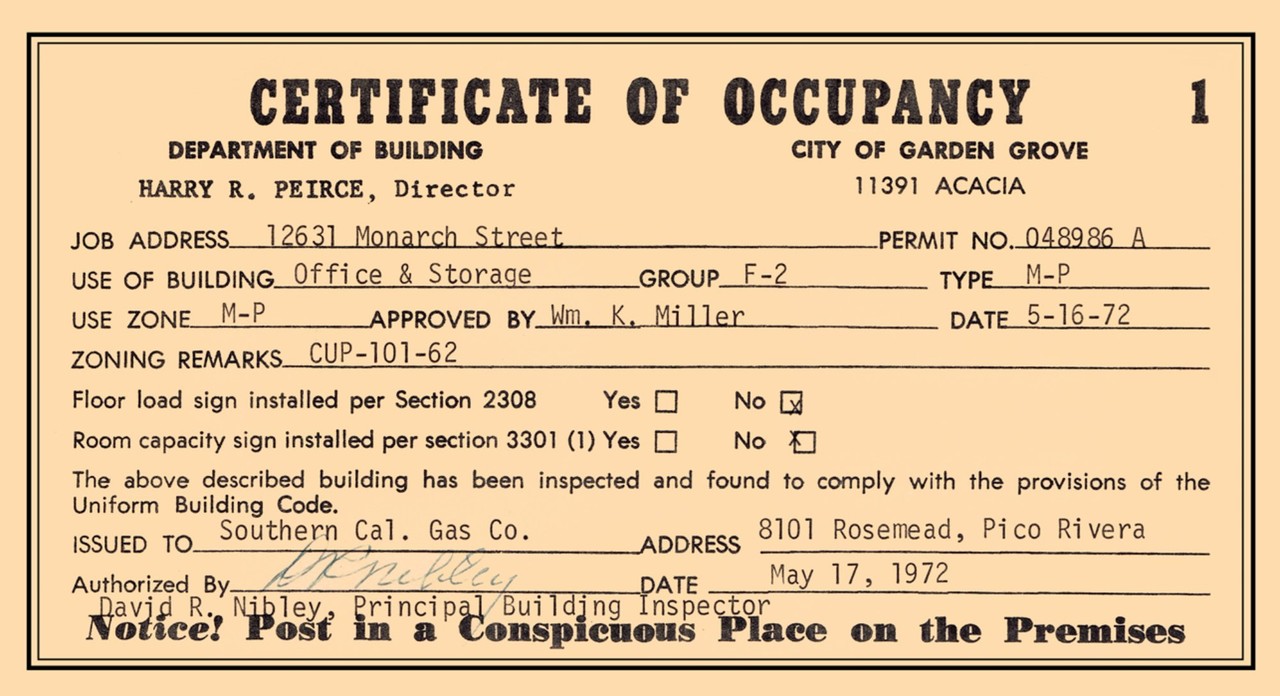
Victorian occupancy permits; suitable to occupy and compliant? Is there a difference?
In Victoria for buildings constructed since 1994 it is a legal requirement to not occupy a building unless an occupancy permit is in place (Sections 39 & 40 of the Building Act 1993 [the ‘Act’]).
The Act then specifies as follows:
46 Effect of occupancy permit
(1) An occupancy permit under this Division is evidence that the building or part of a building to which it applies is suitable for occupation.
(2) An occupancy permit under this Division is not evidence that the building or part of a building to which it applies complies with this Act or the building regulations.
So, does this mean that if a building has an occupancy permit it is not necessarily compliant with the legislation, specifically the BCA? Well, no. An occupancy permit will almost always also be a statement of compliance with the BCA and the Building Regulations for the following reasons.
Regulations 901(1)(d) & 902(a) of the Building Interim Regulations 2017 (and the previous Building Regulations 2006) provide a process that requires notification of completion of the building work by the builder, and keeping of direction records by the building surveyor. The building work is subject to compliance with the permit (which must comply, see Section 24 of the Act) and cannot be considered 'completed' until all work is completed in accordance with the permit, or if directions were issued to the builder during the construction process; then completed in accordance with the building permit, other than any matters that were allowed by the direction/inspection process to be ‘substantially’ compliant, rather than ‘fully’ compliant (see the text in Section 37(1) of the Act). The recent Building Act amendments to include ‘directions to fix’ provisions for builders in new Sections 37A-37F of the Act also reinforce this view.
In my view, this is the reason why the language in Sections 38(2) & 46(2) is included. Both an occupancy permit and a certificate of final inspection might be statements of compliance once the building work is completed (and most often will be), but without further investigation of the specific permit documents, cannot be used as ‘evidence’ of compliance in a court, or any other legal process. The Act uses the term’ evidence’ in many locations and the use of the word evidence in this circumstance is intended to be read narrowly. Other examples include;
239 Certificate of Registrar
A certificate of the Registrar of the Victorian Building Authority specifying that a person is or is not registered in the Register of Building Practitioners …, is evidence and, in the absence of evidence to the contrary, proof of the matters stated in the certificate.
I believe practitioners are misunderstanding the intent of this provision and that a building must be completed and compliant at the end of the construction process, unless specifically varied as 'substantially’ compliant (for that specific inspection matter) by the building surveyor in accordance with Section 37 of the Act. Even if Section 37 is applied, the remainder of the building work must still be compliant and an occupancy permit can be relied upon as confirmation of that compliance.
Akritidis Group Building Consultants
6yInteresting article Stephen. I agree that part of the reason we have a final inspection is to check and ensure that the building work, in so far as we can see and establish, complies with the Building Act and Regulations. The only qualification I would place on that is, that the RBS cannot be responsible for things he/she cannot see and that the builder did not carry out in accordance with permit and/or regulations (i.e. I do not believe the legislation intended for destructive testing upon completion of the building work). My view is that the 'disclaimer' in section 46(2) the Act is explicitly for those matters the RBS cannot see and did not inspect. Regards, Ari
Technical Director at RED Fire Engineers
6yThe degree of compliance would only be as thorough and as diligent as the person who acts as the regulatory authority to issue the Certificate.